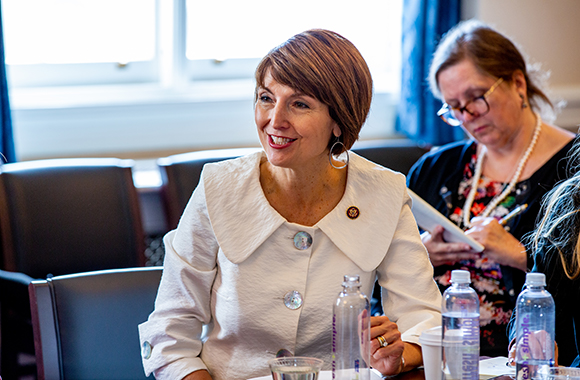Safety at Sea
When the RMS Titanic hit an iceberg and sank on April 15, 1912, the public collectively gasped in horror at news accounts of how nearly 1,500 people had died in the icy waters, amid a shortage of workable lifeboats that might have carried them to safety.
The Titanic wasn’t the only maritime disaster that killed scores of people. In fact, for centuries, cargo and passenger ships had been allowed to put to sea without adequate lifeboats to carry not just passengers, but also their crews.
In the previous decade, similar disasters had stolen hundreds of lives. When the Rio de Janeiro sank off San Francisco in 1901, 128 died. When the Slocum went down in the East River in 1904, 1,021 perished.
But the Titanic disaster, which involved many wealthy and famous people, galvanized attention in a new way, and in 1915, the U.S. Congress passed the Safety at Sea legislation, often called the Magna Carta of the Seas, that had been years in the making. It required vessels to carry an adequate number of properly equipped lifeboats and a sufficient crew to man them. It also limited work hours for sailors and abolished the ancient practice of imprisonment for desertion.
In the decades leading up to this crucial legislation, only one outside organization actively lobbied Congress to pass the law— the National Consumers League (NCL). While shipowners and sailors’ unions wrestled over what provisions should be included in the bill, and while maritime companies vociferously opposed changes they said would be costly, NCL was the only voice advocating for the human lives of both the passengers and the crews.
Soon after the disaster, Florence Kelley, NCL’s general secretary, had been told that the lifeboats on the Titanic had failed because when the ship listed on its side, the lifeboats couldn’t be launched because they lacked a simple mechanical part, a davit, that would have allowed them to be lowered securely into the sea. Frances Perkins later recalled that Kelley “saw red” when she learned that fact and had promptly contacted Andrew Furuseth, the head of the International Seamen’s Union, to offer her help in lobbying for the Safety at Sea legislation.
Kelley and Perkins both came to admire Furuseth, a widely respected labor leader who was known for his frugal living in support of the cause of improving the lives of low-paid sailors he represented.
The League voted to endorse the Safety at Sea legislation, and Kelley went to Washington to lobby for it. In 1913, she explained in the League’s annual report why she had chosen to do so.
“What has the Consumers League to do with safety at sea?” she recalled being asked by Sen. Theodore Burton of Ohio, one of the Senate panelists who investigated the disaster and questioned the League’s participation in testifying about it afterward.
“The answer is obvious,” she told the League. “The National Consumers League counts among its members men and women who travel by sea for business or pleasure. They remember the Bourgogne, the Republic, the Titanic, the Volturno, the Monroe. They are horrified by the Empress of Ireland disaster. They prefer not to be drowned.”
Moreover, she said, the League looked not just at risks to passengers, but also risks to the affected workers.
“These members recognize, too, that on shipboard, they are served by stewards and stewardesses, cooks, stokers and seamen, in a far closer human relation than that which they have long acknowledged towards girls who sell them umbrellas and gloves in stores, or men and women who fashion their garments in tailor shops. And members of the Consumers League accept their responsibility for taking a full share in demanding the common safety. There are, moreover, the thousands of humble fellow passengers who travel by steerage, voiceless and powerless to provide for their own safety.”
In 1914, Kelley testified in support of the bill by describing her own terrifying experience at sea. She had been traveling back to the United States from a conference in Brussels on a ship called the Kroonland when one of the ship’s engines broke down in very high seas. Simultaneously, they were wired to rush back to try to save another ship, the Volturno, that had caught on fire and was sinking. As they approached the stricken Volturno, Kelley could hear its passengers screaming in German for assistance: “Help us, we’re dying!”
But although the Kroonland had 34 lifeboats to rescue people, the vessel did not have enough trained crew members to send them out, and only three boats, manned by volunteers, set out in the heavy seas to make the rescues. They managed to save 88 people, including a number of children, she told lawmakers, but more than 135 people died because neither ship had been well enough prepared to handle emergencies at sea.
Furuseth came to view Kelley and Perkins as real allies in the push for higher safety standards. He later told Congress that the reformers had used the Triangle fire and Titanic disasters to help push for lasting solutions to old problems.
“No one will claim that it is safe to crowd people into a theater or a shirtwaist factory and then to lock the doors,” he told lawmakers later. “Is it not even more dangerous to jam a steamer full of passengers and then to send it out of harbor without having on board the means whereby they may be taken off and safely in case of need?”
In 1923, as NCL confronted a conservative wall of opposition in Washington, DC, to its other efforts and faced a number of daunting setbacks, NCL President John R. Commons, the progressive thinker and labor historian from Wisconsin, recounted the Safety at Sea legislation as one of the group’s signature achievements, noting the success with which NCL had collaborated with the International Seamen’s Union to gain passage of the bill.
By the time Furuseth, the grizzled and weather- beaten old mariner, died in 1938, Kelley had been dead for six years. But he entrusted his funeral to Perkins, and she arranged for his body to be laid out in state at the Department of Labor building. He was the first labor leader to be so honored, according to the Sailors’ Union of the Pacific. Furuseth had 71 honorary pallbearers, and among them was Secretary of Labor Perkins.
______________
– NCL board member Kirstin Downey, author of “The Woman Behind the New Deal: The Life of Frances Perkins, FDR’s Secretary of Labor and His Moral Conscience,” Nan Talese/ Doubleday Publishing, 2009.
Sources: The Seamen’s Bill: Hearings Held Before the Committee on the Merchant Marine and Fisheries, Part 2, 1914; “In memory of the Emancipator of Seamen: Andrew Furuseth, 150th Anniversary,” Brotherhood of the Sea, West Coast Sailors, March 12, 2004; NCL annual reports 1913, 1914-1916, NCL collection, Library of Congress; NCL annual meeting, 1923, NCL Collection, Library of Commons; International Conference on Safety at Sea: Messages From the President of the United States, U.S. Government Printing Office, 1914.
















